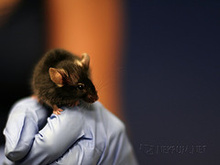 Viruses make their living by breaking into cells and using the machinery and energy in the cell to reproduce. Once inside, some viruses immediately hijack the cell and make copies of themselves which burst out into the world to infect new cells. Other viruses take a staid approach, though. Instead of taking over the cell, they quietly slip a copy of their genes into its DNA. When the cell divides, it copies the newly acquired viral genes along with the rest of its genome. It’s a better deal for the virus, since all of the cell’s descendants will be carrying viral genes which can eventually come out of hiding to commandeer the cell and replicate. A really lucky virus is one that finds itself inside an egg cell. Getting into the DNA of a single cell means getting copied into all of its daughter cells, but getting into the DNA of an egg cell means getting copied into every cell in the organism that grows from the egg…and from there into all of the organism’s offspring. Lucky viruses that succeed in pulling off that trick can still break out and cause trouble, but they can also become integrated into their host’s genome; instead of struggling to reproduce, they can then just kick back and enjoy the ride while we lumber along, making copies of them whenever we make new cells or have children. Continue reading →
Viruses make their living by breaking into cells and using the machinery and energy in the cell to reproduce. Once inside, some viruses immediately hijack the cell and make copies of themselves which burst out into the world to infect new cells. Other viruses take a staid approach, though. Instead of taking over the cell, they quietly slip a copy of their genes into its DNA. When the cell divides, it copies the newly acquired viral genes along with the rest of its genome. It’s a better deal for the virus, since all of the cell’s descendants will be carrying viral genes which can eventually come out of hiding to commandeer the cell and replicate. A really lucky virus is one that finds itself inside an egg cell. Getting into the DNA of a single cell means getting copied into all of its daughter cells, but getting into the DNA of an egg cell means getting copied into every cell in the organism that grows from the egg…and from there into all of the organism’s offspring. Lucky viruses that succeed in pulling off that trick can still break out and cause trouble, but they can also become integrated into their host’s genome; instead of struggling to reproduce, they can then just kick back and enjoy the ride while we lumber along, making copies of them whenever we make new cells or have children. Continue reading →
 I enjoyed Born Anxious more than I expected to but less than I hoped. Written by Daniel Keating, a psychology professor at the University of Michigan, it synthesizes over a decade of research on how stress affects the course of our lives. Keating presents an interesting and convincing case that experiences early in life — or even in previous generations — can set biological switches that have wide-ranging consequences, affecting health, social well-being, and professional success. Continue reading
I enjoyed Born Anxious more than I expected to but less than I hoped. Written by Daniel Keating, a psychology professor at the University of Michigan, it synthesizes over a decade of research on how stress affects the course of our lives. Keating presents an interesting and convincing case that experiences early in life — or even in previous generations — can set biological switches that have wide-ranging consequences, affecting health, social well-being, and professional success. Continue reading 




You must be logged in to post a comment.